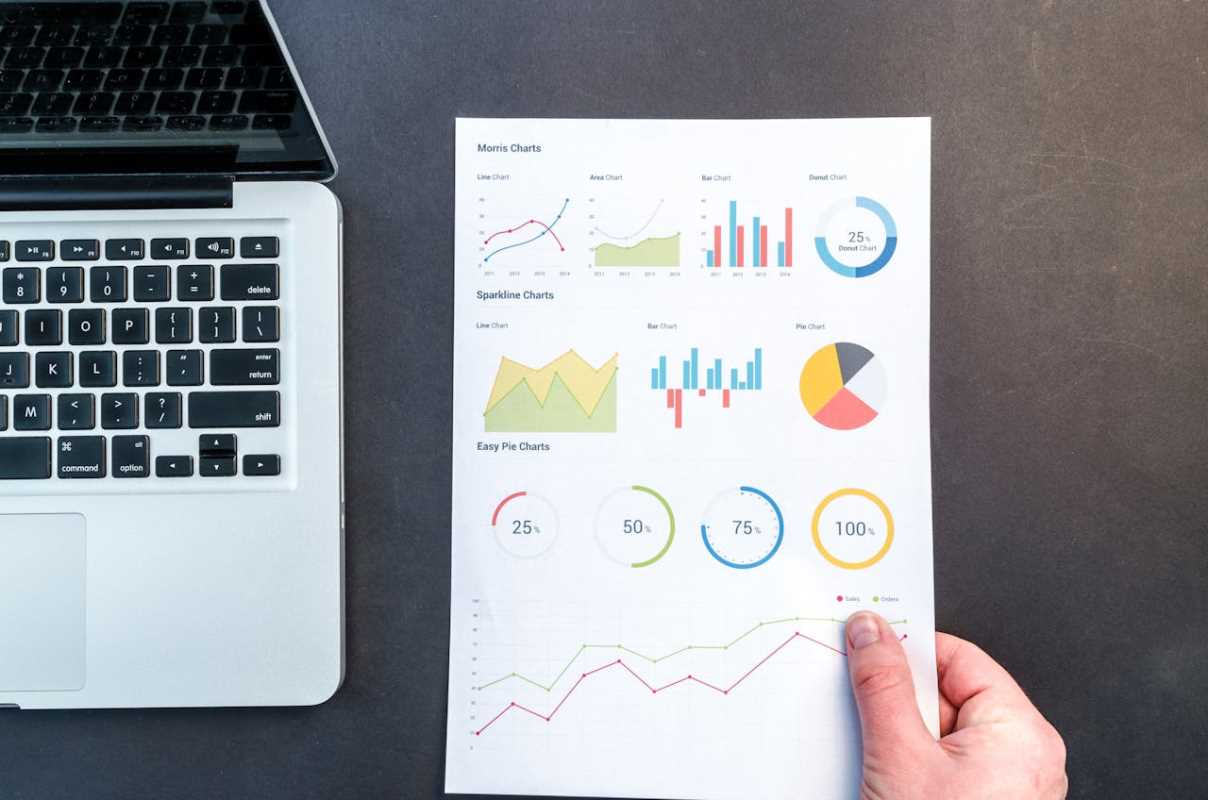Running an e-commerce business requires more than just launching a website and uploading product listings. Success in this competitive space largely depends on tracking and optimizing key performance metrics. By monitoring the right data points, you can make informed decisions, improve overall performance, and scale your business strategically.
Sales Metrics
Sales are the lifeblood of any e-commerce business. Here are the most critical sales-related metrics you need to monitor:
1. Revenue
- What It Measures: Total income generated from sales, before subtracting expenses.
- Why It’s Important: Revenue reflects the overall financial health of your business. Tracking it over time helps you identify growth patterns and flag potential downturns.
- How to Use It: Break revenue into categories, such as by product line or sales channel, to spot trends and opportunities for improvement.
2. Average Order Value (AOV)
- What It Measures: The average amount customers spend per transaction.
- Why It’s Important: AOV provides insights into your pricing strategy and customer purchasing behavior.
- How to Calculate: Divide total revenue by the number of orders placed.
- How to Improve It: Offer product bundles, upsells, or free shipping thresholds to encourage larger purchases.
3. Conversion Rate
- What It Measures: The percentage of website visitors who make a purchase.
- Why It’s Important: A low conversion rate could signal issues with your website’s usability, pricing, or product appeal.
- How to Calculate: (Number of purchases ÷ Number of website visitors) × 100.
- Tips for Optimization: Simplify the checkout process, improve website speed, and use persuasive product descriptions to boost conversion rates.
4. Gross Profit Margin
- What It Measures: The difference between revenue and the cost of goods sold (COGS), expressed as a percentage.
- Why It’s Important: It reveals how efficiently your business is generating profit from sales.
- How to Calculate: [(Revenue - COGS) ÷ Revenue] × 100.
- Actionable Insight: If your margin is low, consider renegotiating supplier contracts or optimizing pricing.
Customer Acquisition Metrics
Acquiring new customers is fundamental to growth, but it can be costly. These metrics help you evaluate the efficiency of your acquisition efforts:
5. Customer Acquisition Cost (CAC)
- What It Measures: The cost of acquiring a new customer.
- Why It’s Important: High acquisition costs can eat into profit margins.
- How to Calculate: Total marketing and sales expenses ÷ Number of new customers acquired.
- Strategies to Reduce CAC: Use targeted advertising, refine your marketing funnel, and invest in organic growth strategies like SEO.
6. Traffic Sources
- What It Measures: The origin of your website visitors, such as organic search, paid ads, or social media.
- Why It’s Important: Knowing where your traffic comes from allows you to focus on high-performing channels.
- How to Use It: Use tools like Google Analytics to analyze which sources drive the most conversions, and allocate your budget accordingly.
7. Click-Through Rate (CTR)
- What It Measures: The percentage of people who click on your ads or promotions after seeing them.
- Why It’s Important: A higher CTR indicates that your messaging resonates with your audience.
- Optimization Tips: Test different calls-to-action, headlines, and visuals to improve CTR.
Customer Retention Metrics
Keeping existing customers is not only more cost-effective than acquiring new ones but also boosts lifetime value. These metrics focus on retention:
8. Customer Retention Rate
- What It Measures: The percentage of customers who return to make repeat purchases over a specific period.
- Why It’s Important: High retention rates signal customer satisfaction and loyalty.
- How to Calculate: ([Total Customers at End of Period - New Customers Acquired During Period] ÷ Total Customers at Start of Period) × 100.
- Retention Strategies: Offer loyalty programs, personalized marketing, and stellar customer service.
9. Repeat Purchase Rate
- What It Measures: The percentage of customers who place multiple orders.
- Why It’s Important: Indicates how likely customers are to return, which directly impacts profitability.
- How to Calculate: (Number of customers who made more than one purchase ÷ Total number of customers) × 100.
- Tips for Growth: Promote post-purchase incentives, like discounts on future orders or exclusive access.
10. Customer Lifetime Value (CLV)
- What It Measures: The total revenue expected from a customer over the duration of their relationship with your business.
- Why It’s Important: A high CLV justifies the cost of acquiring and retaining customers.
- How to Use It: Focus on maximizing CLV through cross-selling, upselling, and personalized experiences.
Operational Efficiency Metrics
Streamlining your operations ensures cost-effective business growth. These metrics highlight areas where your processes can become more efficient:
11. Fulfillment and Shipping Costs
- What It Measures: The expense of processing and delivering orders.
- Why It’s Important: High fulfillment costs cut into gross margins and can deter profitability.
- How to Optimize: Use automation, negotiate better shipping rates, and refine your packaging strategy.
12. Inventory Turnover
- What It Measures: How quickly your inventory sells and replenishes.
- Why It’s Important: Helps you avoid overstocking or stockouts, both of which cost money.
- How to Calculate: Cost of Goods Sold ÷ Average Inventory.
- Action Plan: Improve forecasting to adjust inventory levels and reduce waste.
13. Cart Abandonment Rate
- What It Measures: The percentage of shoppers who add items to their cart but don’t complete the checkout process.
- Why It’s Important: Reducing cart abandonment leads directly to increased revenue.
- How to Calculate: (Number of abandoned carts ÷ Total carts created) × 100.
- Ways to Improve: Use cart abandonment emails, offer discounts at checkout, and ensure a mobile-friendly shopping experience.
14. Website Performance Metrics
- What It Measures: Key elements like page load times, uptime, and error rates.
- Why It’s Important: Slow or glitchy websites frustrate users, driving them away before they convert.
- How to Monitor: Use tools like Google PageSpeed Insights to track performance.
- Optimization Steps: Prioritize website speed, improve navigation, and ensure mobile compatibility.
Regularly reviewing and analyzing these metrics not only highlights areas for improvement but also helps you make smart, data-driven decisions. Focus on consistent measurement, refine your processes, and stay agile in responding to market trends. By doing so, you'll set your e-commerce business up for long-term sustainability and success.
 (Image via
(Image via





